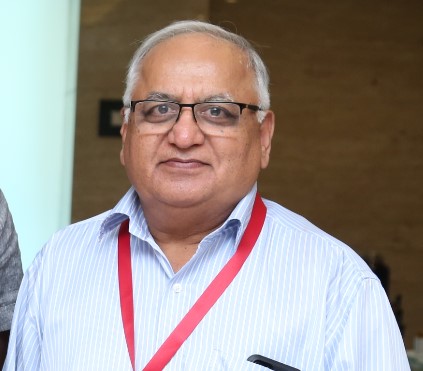HealthRise: India Spotlight

Challenge
Ganga Bai often felt weak and hungry and sometimes experienced vertigo. She didn’t know why. It wasn’t until the Catholic Health Association of India (CHAI) visited her home and told her about a screening camp run by a project called HealthRise that she solved the medical mystery. Her blood sugar level was low so she got a referral to the community health center, which confirmed she had diabetes. After receiving medicine and adopting lifestyle changes she had to make, she is on the mend.
“It is a good thing that the (screening) camp was organized,” she says. “That has revealed what was ailing me. Due to the (project) staff’s continuous guidance, I have done everything that I should be doing to tackle this disease, and now I feel well.”
Ms. Bai is not alone. Non-communicable diseases (NCDs) such as diabetes and hypertension account for 60 percent of deaths in India. Though the prevalence of such diseases is growing, many people like Ms. Bai don’t know they have these conditions.
To address this growing health burden, Medtronic Foundation in partnerships with Abt Global and key stakeholders co-designed HealthRise, a three-year, community-based demonstration project to expand access to care and management of NCDs at the primary health-care level.
The program selected two districts where NCD initiatives weren’t local government priorities. On the supply, or provider side, shortages of equipment, staff and pharmaceuticals led to service-delivery gaps. Making matters worse, without screening at primary health facilities, symptomatic patients had to go to expensive tertiary facilities. That often led to catastrophic health spending, leading Indian households to spend up to 25 percent of their annual income on diabetes care.
HealthRise Intervention
HealthRise pioneered a model for coordinated care that integrated communities, patients, frontline health workers, and health care providers at government health facilities. Frontline health workers led awareness campaigns that included door-to-door visits, street plays and other community forums to explain the importance of testing for diabetes and hypertension. During the events, health workers screened participants for these conditions. Through routine home visits and reminders from a call center, patients received motivation to complete a confirmatory diagnosis at a nearby health facility.
The community-based model thus increased early detection. Patients diagnosed with hypertension and diabetes received quarterly follow-up visits to confirm and support treatment adherence. All of this produced long-term health benefits for individuals and potential cost savings.

These benefits in the two districts could lead to nationwide adoption of the model. “The HealthRise implementation strategy makes it possible to influence NCD policy in India in the future,” says Dr. Damodar Bachani, deputy commissioner (NCDs), Ministry of Health and Family Welfare. The linkages among primary, secondary and tertiary care “should be in the framework of the national NCD program,” he adds.
Results
Early Detection: Raising awareness and extending care into communities and homes promoted NCD detection, self-care, and monitoring and treatment adherence.
Community empowerment: The SALT approach--stimulate and support, appreciate, listen, and transfer-- helped people connect with each other and motivate communities to take action. Group members have started regular exercise routines with their families, organized screening camps in villages, and participated in tree planting and cleanliness drives. “Before SALT people used to think of themselves,” outreach worker Asha Meghwal wrote in a blog. “Now they think about the whole village.”
Digital health: Abt introduced technology solutions to improve service delivery and data collection. An outbound call center provided follow-up reminders while an Interactive Voice Response System answered questions through automated responses. An e-clinic provided remote access to a specialist located in a tertiary hospital, saving travel costs, opportunity costs and wait times. Frontline health workers used an E-Health Card as a surveillance tool for 10 NCDs. The Prime Minister gave the tool an innovation award.
Related Highlights:
HealthRise: An Approach to Help People Survive Treatable Chronic Diseases
Indian Government Honors HealthRise App with Innovation Award
